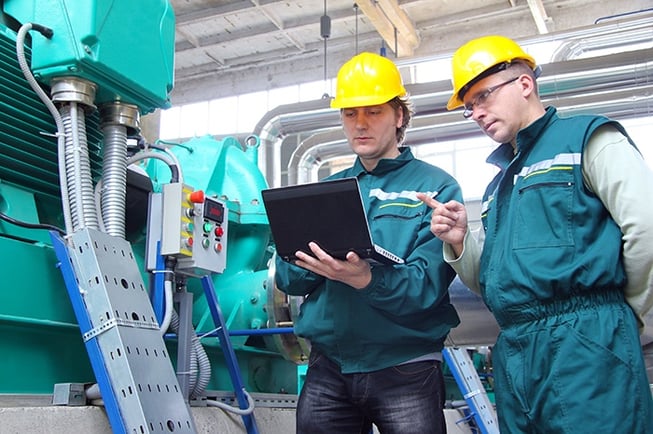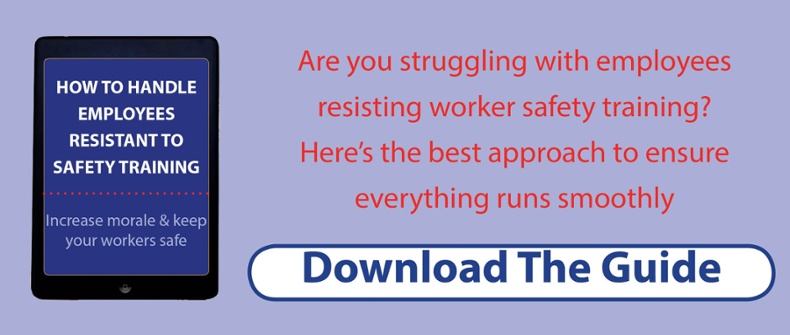
Keeping your workers safe is one of the primary responsibilities of a manager and arguably the most important. You need to know that your work force is safe at all times no matter what they are doing. One of the most dangerous times facing any manager when it comes to health and safety is when big changes occur. Whether these changes come from new working environments, new manufacturing processes, new equipment, new procedures or any other reason, change can bring about unfamiliarity. It is this unfamiliarity that can be dangerous, as workers who are not entirely sure what they are doing can make costly mistakes.
Out with the old, in with the new
There are numerous ways in which change can affect health and safety procedures, but common to all of them is the biggest danger of change: unfamiliarity. New by definition means your workers will not have experience with whatever has changed, and this unfamiliarity is the most likely cause of potential accidents. Depending on what exactly has changed, training will likely be necessary to allow workers to learn about whatever new procedure, machinery or working environment they will be encountering. It may be legally required, but even if it isn't then it is almost always worthwhile to acclimatise your workers to upcoming changes before they happen.
Changes affect everyone
It's important that everyone relevant is at least aware of the changes that are to be made, whether they are directly affected by them or not. Whether the change effects a team or a single worker, it's important that everyone is informed. Lone working risks are even more important to familiarise your workers with due to the inherent dangers that come with working alone. Accidents may not necessarily happen directly due to the new changes, but they could factor in to an accident caused at a later stage in the chain due to the new changes. As a manager it is your responsibility to take care of your worker's health and safety, so making sure everyone is informed should be your top priority.
Overlap old and new
A transition period is highly recommended to allow for a smoother learning curve where possible and practical. Sometimes this is not possible and there is an immediate change from old to new, but if it is at all possible to transition from old to new then it is recommended that you do so. Be sure to keep the transition period to the minimum length you think necessary in order to allow for your workers to get used to the new changes. A lengthy transition period risks your workers clinging on to the old ways or getting used to doing things half old half new, neither of which you want. Since you are in charge of health and safety, it is your responsibility to take what you know about both the old and new systems and develop a plan that allows for a smooth transition, retaining the familiarity (and therefore safety) of the old way of doing things while pushing your workers towards the new way.
Your situation will be too specific to give general advice, but always keep in mind what you are asking your workers to do and how you are asking them to do it. The transition period must minimise disruption to their workflow where possible to avoid workers becoming resistant to the new changes.
Health and safety first
Health and safety should always be your top priority as a manager. Risks are ever present and should be considered ahead of any transition or firm changes being made. Lone working risks are especially important to factor in because nobody will be around to help should anything go wrong. Everyone is capable of making mistakes, particularly when using something new and unfamiliar. When a worker is alone that means the potential consequences of making a mistake are amplified and it is your job to make sure that nothing goes wrong, both for the sake of your company and your workers.
When analysing lone working risks it is strongly recommended that you train, or at least inform, several workers of the changes to be made. Lone workers may be a necessity but several people should be informed of what is going on, so that people know where your lone workers are and what they are doing in the event that anything goes wrong. Lone workers can become trapped or stuck and unable to call for help. There should be trigger situations that spark investigation, such as a worker not checking in over communication channels every set period of time, or turning up at a preset location at a certain time. If a lone worker gets into trouble and nobody knows where they are or what they're doing, it could be far too late by the time somebody realises that something is wrong. Responsibilities should be shared where possible to minimise lone working risks.
Health and safety as part of the workflow
The best way to minimise health and safety risks when changes occur in the work place is to integrate them into the workflow itself. When health and safety is treated like just another step in the work process, it becomes accepted and integrated. Health and safety can seem like a chore when it is treated like some meddling forms to fill out and unnecessary procedures that get in the way of work. This makes workers reluctant to obey and this can cause accidents. Health and safety should be considered in such a way that it becomes a transparent part of the working process, such that workers are following health and safety procedures almost without realising it. Keep your procedures up to date at all times and test regularly to ensure worker compliance.





